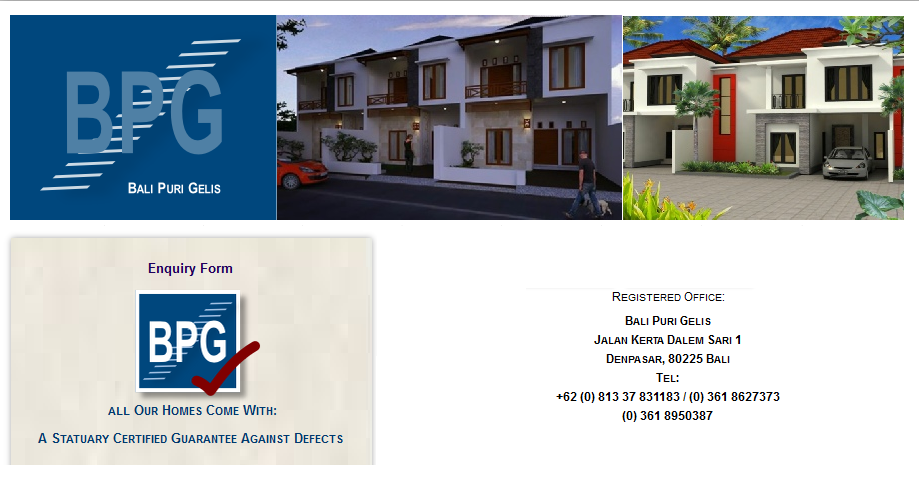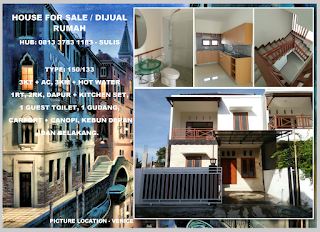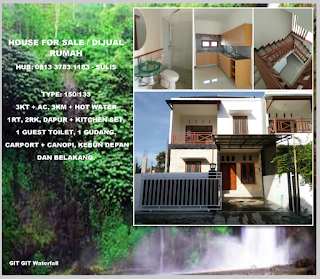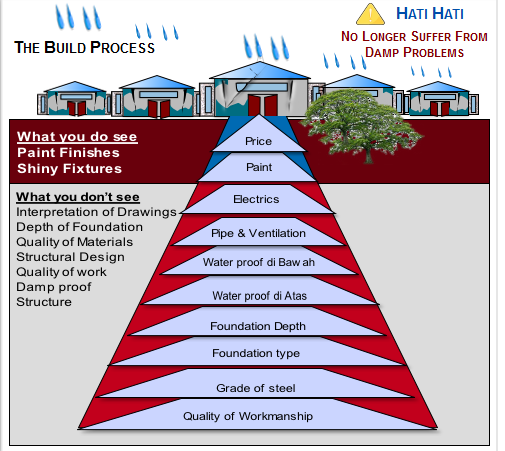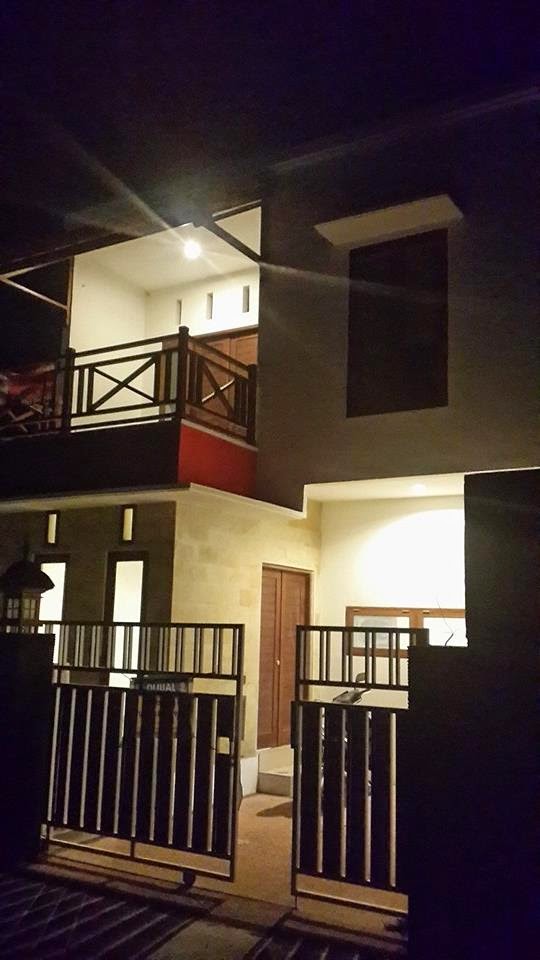Tuesday 18 August 2015
Wednesday 18 February 2015
Agents the Good the Bad and the Ugly.
Use an agent by all means but don't limit
yourself. Why not? Whilst there are many agents who are scrupulously
honest and those agents take a standard commission from the builder. They
will care for the interests of the customer, some if they are able will
look to the quality of the build as the home progresses, as in the case of
Jepun Bali who (we, Bali Puri Gelis highly recommend Jepun Bali) monitor the
build and only recommend quality properties or properties that are fit for
purpose as a family home.
There are others who just insist on a huge
percentage, above what's normal, based on the value of the property and have no
interest in the quality. Once sold they are gone into the distance, presumably
onto another sale.
An agent called me yesterday and was clear; he has a buyer that buyer wants
a home in our location. However, he was equally clear unless we agreed
his (the agents) terms then he will not put our home forward. The agents
terms were clear; he doesn't care about the quality, he didn't care if it's
still standing after an earthquake. He just cared for a huge commission,
he was clear; he didn't care what was agreed with his buyer.

I would like to be clear; we build quality homes. Homes that will look
as good tomorrow even next year, as they do today. They will not have
damp as long as regular standard maintenance is undertaken. We will work with
an agent and we will not renege on an agent agreement, whether verbal or
in writing. But for the sake of the buyer and of us we will not accept terms
that harm the bottom line for the buyer. We build quality and we provide
maintenance after the sale.
Friday 23 January 2015
Cowboy builders
Hati Hati
Big problems are arising with cowboy builders. Individuals can purchase land and build a home and then sell that home at a reasonable profit. Buyers are available for such properties, they are excited about the glitzy finishes, custom built kitchens etc. They can often negotiate a better price than they can on an adjacent property.
Buyer beware
 There is much more to a property that can not be seen than there is that can be seen. Recently CV Bali Puri Gelis had a buyer for a small house in Pemogen. A well constructed small single story property which incorporated all the latest damp proof technology, along with substantially deep foundations constructed of black rock at a depth of more than a 1 metre. The property had all the high grade steel appropriate to withstand an earthquake.
There is much more to a property that can not be seen than there is that can be seen. Recently CV Bali Puri Gelis had a buyer for a small house in Pemogen. A well constructed small single story property which incorporated all the latest damp proof technology, along with substantially deep foundations constructed of black rock at a depth of more than a 1 metre. The property had all the high grade steel appropriate to withstand an earthquake.
The buyer however negotiated a bargain price for the property the deal was closed. A price which included the agents commission. But then an adjacent property developer owner proposed a better price than ours, less approx US$700, then the developer appeared to renege on the agents commission. And the buyer closed the deal saving 1%.
A few weeks later the wet season came along and the house became a sponge, capillary action from below sucking water up. The walls let water through and the unprotected roof may as well have not been there at all.
I am also sure in saying that the property has a 20cm foundation built from a powdery limestone substance. We wait to see how it acts during an earthquake.
The buyer has hit a brick wall with his complaints and has decided to now sell the property for the best price he can get. A substantial loss from his original purchase just a few short weeks ago.
The CV Bali Puri Gelis property just next door remains as it was prior to the wet season starting. In other words for just 1% more on the purchase price a perfect home awaited them. With a 12 month damp proof guarantee.
At some point controls will have to be put in place to prevent such shoddy behaviour from cowboy builders.
Friday 21 November 2014
Capillary action - How water defies gravity in porous concrete.
Water like any liquid will follow an action known as Capillary action. This means that water can penetrated to heights and depths without exposure defying gravity. ie water can be present upto a meter but in concrete it can soak up further to 3 maybe 4 meters. Which means that water defies gravity when presented with a porous medium such as untreated concrete. Try for yourself get a glass of water hang a tissue over night across the top of the glass with just a corner in the liquid at a depth of 3 maybe 4 centimeters. By morning the level will have dropped by the depth 3 or 4 cm and the surrounding area will be wet.
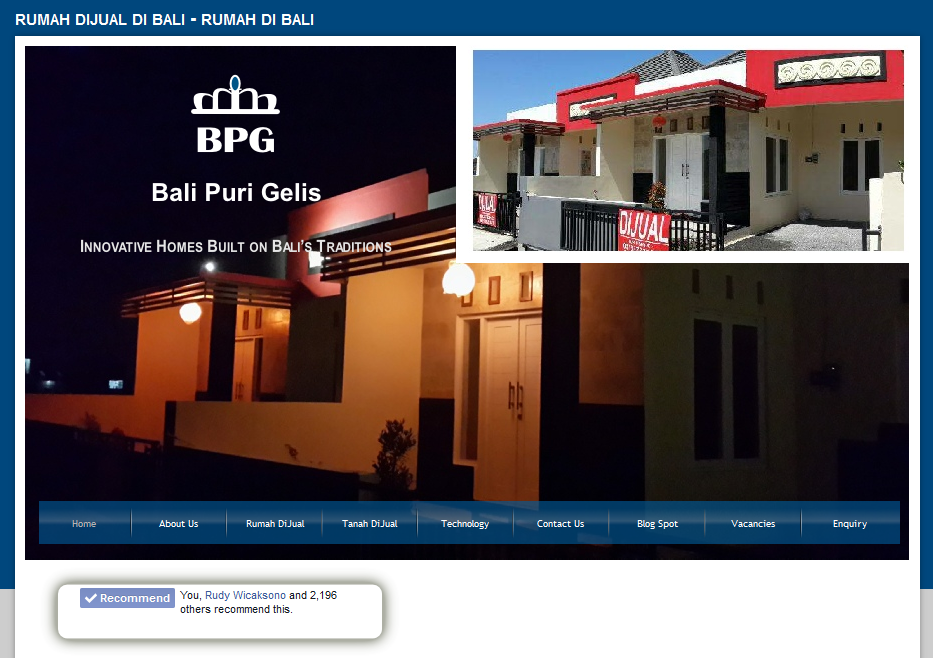 In short water when presented with a concrete porous wall or Bataco uses the wall as a wick just like an oil candle would raise oil to its top. This is known as cohesion and adhesion, it occurs when the intermolecular forces acting on the surface tension which allows damp to penetrate through concrete defying gravity.
In short water when presented with a concrete porous wall or Bataco uses the wall as a wick just like an oil candle would raise oil to its top. This is known as cohesion and adhesion, it occurs when the intermolecular forces acting on the surface tension which allows damp to penetrate through concrete defying gravity.
I've covered this subject many times in the blogs on this site and I have covered how we prevent this from happening. In short we change the molecular structure of the concrete such that it is no longer porous. The concrete will act as a barrier stopping rising damp. It also has the added benefit of making the structure harder and more solid.
Cappillary action was first identified during the 1600's by Leonardo DaVinci
The same is true if not more so from water sitting on the deck of a roof for that too will quickly soak into untreated concrete and then absorbed into gypsum ceilings and walls.
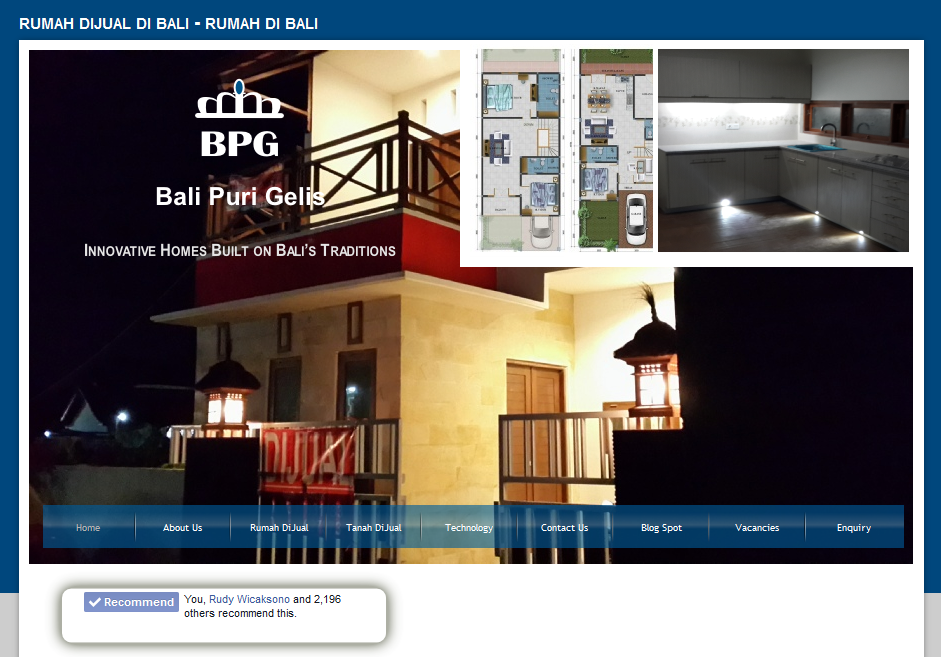 It should be remembered that when damp spots appear they always cultivate bacteria in the fungus or black spots that grow, this fungus is harmful to us all.
It should be remembered that when damp spots appear they always cultivate bacteria in the fungus or black spots that grow, this fungus is harmful to us all.
A Bali Puri Gelis home guarantees against rising damp and falling damp. Providing our homes are maintained then damp will be a distant memory.
Look at a Bali Puri Gelis home look at www.rumah-di-bali.com
feel safe in the knowledge that your home is protected as the rains appear
Thursday 13 November 2014
Tuesday 24 June 2014
Water damage prevention to Bali Homes
A home in Bali is no different to purchasing a home anywhere in the world. Often this purchase will be the single biggest purchase in anyone's life time. Therefore it is critical to be buying through knowledge. In previous blogs I have covered the topic of earthquakes in this blog I will cover the relationship to rainfall and the suitability of your home to withstand water penetration.
Bali is a tropical Island it sits 8 degrees south of the equator (08° 39' S, 115° 13' E) and has a climate to suit its position. The seasons number two and are obvious in so far as they are a wet season and and a dry season. The temperature throughout the year rarely changes however, the humidity rises drastically.
Between Oct and April Bali receives approx 1.4M of rainfall which is significant if you are to stop water penetrating your property.
First thing to note is water is lazy if you have a flat surface it wont go anywhere only sit and soak. The other thing to note is water travels down and it does this along its easiest route so if you have a fracture in your build then that is where it will head.
Water will by Osmosis travel up through a building this is known as rising damp and once you have this it is very difficult to eliminate the damp mark that blots your walls. It is also not at all healthy to live in a room with Fungi spores growing on a damp area.
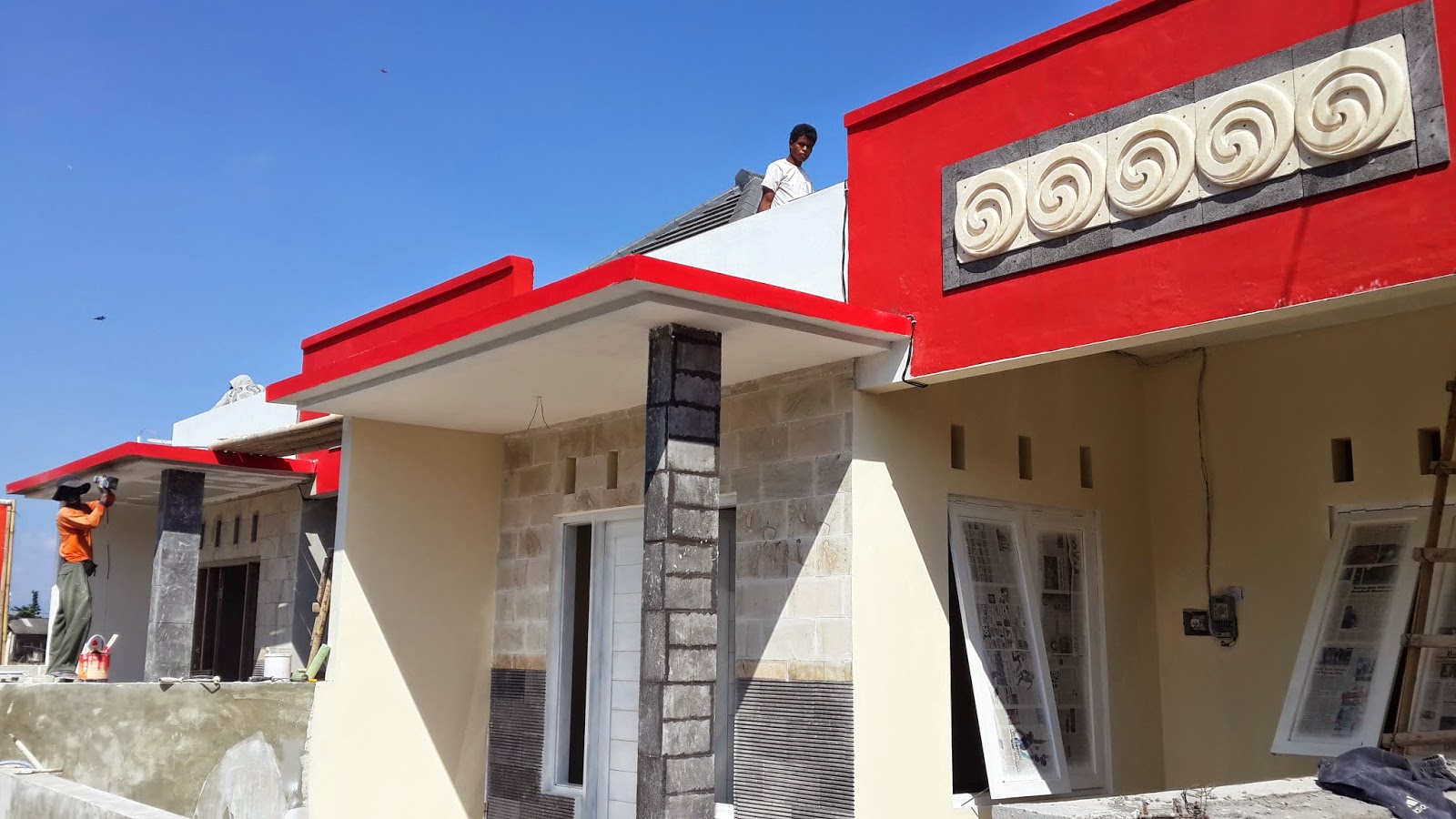 Once you have damp in your walls you get a build up of salt and even if you have blocked the damp from rising the salt within the wall absorbs the water from the air, still keeping a damp patch visible.
Once you have damp in your walls you get a build up of salt and even if you have blocked the damp from rising the salt within the wall absorbs the water from the air, still keeping a damp patch visible.
What we do;
- We start at the foundation we always assess the area that we are building with in ie. level of water table. The ground use prior to build etc.
- If the water table is high then we build higher
- We always start with the foundation and incorporate the latest damp proofing technology see rumah-di-bali.com and click the technology tab.
- This damp proofing additive continues into the columns and the walls. Incidentally this additive causes the cement to harden in a way that helps to add rigidity to the home.
- With minimalist homes and the cost of Land normally homes are built to the limits of the land (tanah) leaving no chance to have the roof extend beyond the building. Therefore it is important to ensure that the external walls are regularly treated with a waterproof paint this we do as standard.
- The deck of the roof is again fabricated from concrete poored all at one time to ensure no fractures exist.
- We add an additive to the deck to ensure no water can soak through.
- We always put a slope on the deck to ensure that the water can find its way to the nearest drain point.
- We always add a drian to remove surface water.
- The roof slope is appropriate to ensure water runs off the roof in a fast and efficient way. Depending on the tiles we again coat with a waterproof solution.
- The roof tiles have to be laid in rotation and they must overlap vertically and horizontally
With all of this in mind you are now well equipped and able to ensure that your family home is safe and secure from the rains of Bali.
Alternatively look to a Bali Puri Gelis Home here on the paradise Isle of Bali.
Saturday 21 June 2014
Homes Homes Homes 3 rules 1) safety 2) Safety and rule 3) Safety
Homes Homes Homes 3 rules: 1) safety 2) Safety and 3) Safety
Villa style or starter homes try a Bali Puri Gelis property. Much has been said about properties in Bali and perhaps right across Indonesia. Be advised Bali and Indonesia sit on a fault line, they are also in the tropics and experience short spells of monsoon rains. Wet areas dry out as the year progresses causing the ground to shrink.
As for the fault line earthquakes means that the ground can move, sometimes violently. The reason for this is the two plates where they meet are not necessarily a smooth surface and often trap each other that is until the force is overwhelming and the plates free from each other forcing movement in any direction. up, down, left or right. This is of course a scary experience and it should not be dismissed; most fatalities during an earthquake are caused by the buildings collapsing either ones that we live within or work in. Earth quakes are not something that goes away or lays dormant like a volcano can as the plates can move all the time and this movement can be anywhere between 1cm to 9cm per annum.
Bali sits on the larger Australia plate which includes much of the Indian ocean and New Guinea. The rest of Indonesia sits on the smaller plate known as the Sunda plate, however, this excludes Irian Jaya. The Australia plate is by far the most active as it is traveling north at an alarming rate of 6cm per year. This plate is sliding underneath the Sunda plate and is situated just 250 km south of Bali.
It is fair to say that this area with the tectonic plates, volcanoes and Tsunamis is one of the most unstable areas on the planet; which brings me to the need to be sure that your home is equipped for the worst scenario as death comes quick if the roof or the concrete floors collapses.
In order to make your home secure you need to be sure that the foundation is deep and well keyed to the ground that it sits. Columns need to connect with the foundation by a heavy gauge steel and travel to the roof structure uninterrupted. You then need a well constructed ring surround the house at each floor level. This ring also has a steel structure over which is pored concrete ideally mixed with super cement which we always use. This structure wires if you like all corners of the building structure into a 3D dimension i.e. roof is connected to the foundation and front is connected to the back etc.
This brings me to the depth of the foundation minimum for a single storey (1 floor) should be 1Meter deep. some areas where houses are built on what used to be rice fields means the ground is very unstable, extremely wet in the monsoon season and extremely dry in the hot season. Needless to say the ground stretches and shrinks at an alarming rate and your home needs to be well keyed to the land that it sits. Take a look at our starter homes in Permogan and our villa style properties in Sidakarya
Subscribe to:
Posts (Atom)
